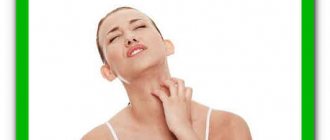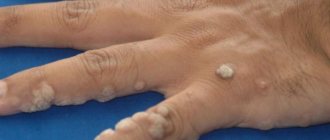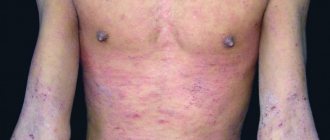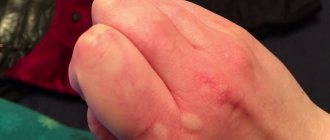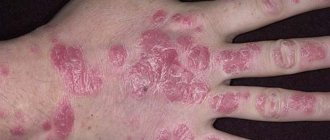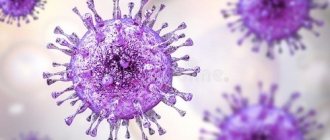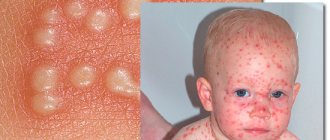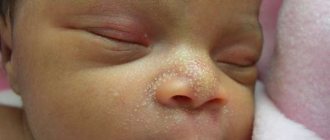Effective remedies for herpes - photo
Herpes is a common infection. Its symptoms are familiar to the vast majority of both adults and children. The manifestation of a herpes virus infection is unpleasant, because rashes in the form of groups of blisters at the site where the source of inflammation is observed are characteristic.
Antiherpetic drugs, the action of which is aimed primarily at suppressing symptomatic manifestations, help provide effective treatment in adults and children, in pregnant women and other groups of patients. Medicines are produced:
- In tablet form;
- In the form of ointments or gels;
- In the form of capsules for intravenous administration.
Important! If primary symptoms of the disease are detected, it is recommended to use medications in the form of ointments. When manifested externally, this approach will limit the spread of virus cells and block herpes infection.
If drugs to combat herpes in the form of ointments do not have the expected effect, you may need to use tablets. In rare cases, if exacerbations or chronic forms of the virus are detected, for example, with untreated herpes on the palate, or if there is prolonged shingles, injections may be prescribed by your doctor.
What is ointment used for for shingles?
Shingles begins with chickenpox in children. After recovery, the virus never leaves the body. When the immune system is weakened, it wakes up and manifests itself in the form of herpes zoster, most often in the elderly.
Treatment of herpes zoster on the body is carried out simultaneously in several directions and is the following:
- tablets containing antiviral substances;
- ointments for local treatment containing antiviral components;
- immunomodulatory drugs.
Ointments for herpes zoster have a complex effect. Shingles is most often accompanied by unbearable burning pain along the affected nerve, so therapy involves the use of painkillers, including products with cooling, analgesic components.
Shingles severely affects the skin, which serves as a breeding ground for bacterial or fungal infections. To eliminate such manifestations and prevent the development of infections during treatment in adults, ointments with antibiotics are required.
Treatment of herpes zoster
Immunostimulants
A decline in immunity is a common cause of exacerbation of herpes. Therefore, it is impossible to eliminate the unpleasant symptoms of the disease without increasing the body's defenses. Antiviral tablets against herpes must be taken in combination with immunostimulants, which are also prophylactic agents if taken during remission.
Lycopid
This immunostimulating drug for the complex treatment of herpes helps to increase the synthesis of specific bodies and promotes the functional activity of phagocytes.
Likopid is indicated for use by adults and children with the following diseases:
- Herpes types 1 and 2 of any localization, including ophthalmoherpes.
- Chronic viral hepatitis B and C.
- Purulent-inflammatory diseases of the skin.
Likopid is one of the fastest-acting medicines. It can be taken by children over the age of one year; the drug is contraindicated only for pregnant and lactating women.
Polyoxidonium
For acute and often recurrent forms of herpes that appears on the lips, you need to take the immunostimulating medicine Polyoxidonium. It is available in different forms: for herpes, doctors prescribe suppositories (vaginal and rectal), lyophilisate and tablets.
Indications for taking the drug are:
- Exacerbation of chronic infectious foci in the nasopharynx, inner and middle ear, and upper respiratory organs.
- Nasal and labial recurrent herpes infection.
- Allergic diseases complicated by viral or bacterial infection.
- Secondary immunodeficiency states.
Can be taken as part of complex therapy with antiviral drugs for herpes in the acute stage and remission. The official instructions for Polyoxidonium do not indicate any side effects; it is prescribed to children from the age of three and to patients with a clinically pronounced stage of HIV infection.
Types of ointments used
Ointments for herpes zoster in humans contain antiviral components that have a targeted effect on viral cells. The doctor selects a remedy after finding out what stage the lichen is at and how affected the skin is.
Creams containing antiviral substances speed up the elimination of shingles symptoms. Components in such products:
Even more interesting:
Ulcer on the head in men photo
Tongue with rubella in children
- slow down the further development of lichen;
- prevent possible complications;
- reduce swelling;
- reduce the number of rashes;
- reduce the intensity of pain and discomfort.
In addition, to alleviate the condition of herpes zoster, medications are prescribed:
- with analgesic effects;
- with local immunomodulatory effects.
You should not select remedies for herpes at your own discretion; antiviral medications have a fairly strong effect and harm not only the cells of the herpes virus, but also healthy cells. Simultaneous treatment with tablets and topical agents speeds up healing, minimizes the risk of complications, and the skin heals faster, without scarring.
Ointments without tablets are effective only in the initial stages. If the disease is advanced, the use of creams alone is ineffective and slows down healing.
How to apply for herpes zoster - list of medications
For local treatment, the doctor prescribes ointments and creams. They should be applied with cotton swabs or swabs, slightly extending beyond the boundaries of the skin area with rashes. This is done 4-5 times a day for about 10 days.
Antiviral ointments for herpes zoster
Most often, doctors prescribe Acyclovir or products containing it. Usually these are tubes of 2-20 mg. The ointment helps to quickly relieve symptoms, slows down the spread of lichen, and eliminates complications. Besides:
- healing is accelerated;
- pain and discomfort are relieved;
- the immune system is stimulated;
- swelling decreases.
After several days of use, the sores begin to dry out and crust over. Acyclovir is valued because of its low price and good effect. The drug is applied 2-5 times a day, for a course of 7 days, if the lichen is not advanced.
Acyclovir: choice of form and drug tolerability, consequences
In addition to acyclovir, other antiviral ointments are used for herpes zoster:
- "Gerpevir". Ointment based on the active ingredient acyclovir. Its use is recommended if Acyclovir has failed to cope with lichen. Use it 3 times a day for at least 7 days, as soon as the first symptoms of lichen appear. After opening the bubbles, the dosage should be reduced. In case of severely weakened immunity, the dosage and duration of treatment are doubled.
- "Zovirax". Imported drug "Acyclovir". Slows down the synthesis of the virus, reduces its activity, relieves inflammation, reduces the number of skin rashes, activates local immunity
- "Vectavir". A product based on penciclovir. Suppresses viruses at the cellular DNA level. Remains inside the cell for up to 12 hours, this leads to a complete blocking of the spread and development of the virus without affecting healthy cells. You need to be treated for 5 days every 2 hours. Do not use in childhood, pregnancy or allergies.
- "Fenistil Pentsivir". Ointment (1%). Inhibits the activity of the virus. Stimulates the formation of interferon. Apply a thin layer at intervals of 2 hours to the affected areas, with the exception of mucous membranes.
- "Alpizarin". Contains plant components, has antiviral and immunomodulatory effects. Antibacterial drug.
- "Epigen." Spray contains glycyrrhizic acid. Eliminates itching, inhibits the development of the virus, stimulates local immunity in case of herpes zoster.
- "Panavir". Gel with antiviral effect, immunostimulant.
“Hiporamin” (5%) is also considered an effective drug for herpes zoster. Cream with the inclusion of sea buckthorn. Inhibits the spread of lichen. For mild forms of lichen, apply up to 6 times in a course of 4 to 10 days. Complex cases are treated for about 3 weeks. Sometimes allergic reactions are possible.
Ointments to prevent bacterial and fungal infections
If the disease is advanced or a person, unable to withstand the severe itching, begins to scratch the rash and peel off the scabs with his hands, then a bacterial infection may occur. You will need to assign:
- Tetracycline ointment. Antibiotic with a broad spectrum of action, with antimicrobial effects.
- Erythromycin ointment. Antibacterial effect.
- "Solcoseryl". Ointment or gel. Heals wounds, regenerates the surface of the skin and mucous membranes. Apply 3 times a day, first treat the affected areas and clean them with antiseptics.
What can be confused with
Herpes on the hands causes changes that can be mistakenly mistaken for symptoms of less dangerous pathologies by patients without medical education, including:
- Insect bites. They cause redness, swelling of the skin, and severe itching. This type of rash differs from herpes in the absence of a grayish liquid in the vesicle that appears. Scratching herpes blisters leads to aggravation of the situation.
- Allergic reaction. Herpetic rash does not tend to spread from the shoulder to the hands. Itchy blisters are more dense than allergic blisters. Taking antihistamines does not relieve unpleasant symptoms.
- Bacterial felon. Herpes of the hands differs from this pathology in the absence of severe inflammation and pus. The pathology does not impose significant restrictions on the mobility of the joints of the hand.
The disease can be confused with a reaction to exposure to aggressive chemical compounds used in industry. Self-medication aimed at combating symptoms without eliminating the cause contributes to the transition of the disease to a chronic form.
Symptoms and causes of the disease
Herpes zoster is characterized by transparent blistering rashes in the intercostal area, accompanied by neurological pain, the occurrence of which is explained by the death of nerve cells as a result of activation of the virus.
The disease mainly affects adults over 25 years of age, the peak of which occurs during the off-season. When a child is infected with the virus, chickenpox may develop, which is especially common among children in the first 5 years of life.
In the complex treatment of herpes zoster, drugs with anti-inflammatory and analgesic effects are used, for example, Movalis.
The occurrence of herpes zoster in humans occurs as a result of activation of the herpes virus, the causes of which are:
- Weakening of the human immune system (as a result of hypothermia, severe illness, long-term use of antibiotics, etc.), which causes the “awakening” of the herpes virus living in the body.
- Penetration of the virus from the outside by contact or airborne droplets from a person suffering from chickenpox.
The following symptoms are characteristic signs of the disease:
- transparent blistering rashes on the skin, localized on one side of the chest, and in rare cases on the face;
- redness, soreness, itching, burning in places where rashes accumulate;
- sharp, shooting pain, turning into aching, similar in nature to the pain of intercostal neuralgia;
- deterioration in general health (fever, headache, symptoms of fatigue).
Shingles, depending on the degree of damage, can take various forms: single watery blisters, clusters of blisters with bloody-serous contents, a purulent form and a generalized form (with tuberculosis, AIDS, tumors, after chemotherapy and radiation).
Reasons for the development of infection
The most important factor leading to the reactivation of the virus is a decrease in immune status. When immune cells can no longer track and destroy virions, they begin to multiply very quickly. Reasons for decreased immunity:
- elderly age;
- pregnancy and breastfeeding;
- long-term treatment with antibiotics and immunosuppressants;
- trauma and surgery;
- frequent viral infections;
- hypothermia;
- excessive insolation;
- stress, emotional tension;
- sedentary lifestyle;
- serious chronic diseases (diabetes mellitus, atherosclerosis, hypertension, hypo- or hyperthyroidism;
- HIV, AIDS and other acquired immunodeficiency conditions;
- oncological pathologies;
- chemotherapy and radiation therapy;
- exacerbation of chronic infections and others.
The disease is always transmitted from a sick person. Ways of spread of infection: through contact (by touching blisters and rashes, violating hygiene rules), through the placenta (from a sick mother to the fetus during pregnancy) and during passage through the birth canal (contact of the biological fluids of the mother with the skin and mucous membranes of the child).
Diagnosis and treatment
Diagnosis of herpes zoster is carried out by drawing up a clinical picture of the disease, which is based on the patient’s complaints and external visual examination of the rash. The attending physician is always interested in the patient’s possible contacts with chickenpox patients at home or in the work environment. To determine the type of virus, a PCR analysis of surface material is taken by scraping from damaged skin. The causative agent of the virus is determined and a blood test for antibodies is performed, which characterizes the stage of the disease.
When choosing an ointment for herpes zoster, you should take into account the nature of the disease associated with the activation of the herpes virus in the body.
Treatment of people diagnosed with herpes zoster is carried out on an outpatient basis using the following groups of drugs:
- Antiviral tablets, injections, ointments, gels and creams (Acyclovir, Zovirax, Famciclovir, Famvir, Valtrex).
- Immunomodulators in the form of tablets and ointments (Kipferon, Cycloferon, Viferon, Amiksin).
- Antihistamine tablets, drops, ointments and gels (Fenistil, Zodak, Cetirizine).
- Painkillers, anti-inflammatory drugs (Nurofen, Movalis, Paracetamol).
- Ganglioblockers (Pyrilene, Gabapentin, Oxycodone).
- Broad-spectrum antibiotics.
Treatment of patients at a young age is carried out using antiviral and painkillers. The approximate duration of the course of procedures is about 2 weeks. For the treatment of herpes in pregnant women and patients over 50 years of age whose immunity is reduced, a more serious approach is required with the use of immunomodulatory drugs and vitamin complexes.
Ointments for the treatment of herpes zoster
The question of how to apply shingles usually arises among people who are encountering the manifestations of this disease for the first time. It should be borne in mind that if the body is seriously damaged, local remedies alone are not enough; complex treatment is necessary to suppress the activity of the virus from the inside.
The most effective ointments for herpes zoster:
- Acyclovir. The use of this ointment reduces the intensity of skin rashes, promoting the formation of crusts and the further disappearance of lesions. It also has an analgesic and immunomodulating effect, reducing the risk of developing possible complications. Release form: tubes from 2 to 20 g. The ointment is quickly absorbed, protecting the surrounding healthy skin from further spread of infection. The drug should be applied in a thin layer with a cotton swab or swab to the affected area of the skin, covering the nearby area at a distance of 5-7 mm. The procedure is carried out daily up to 4-5 times, with a break of 4 hours. The duration of treatment depends on the stage of the disease and lasts on average about 10 days. For people with individual intolerance to the components of the ointment, its use is not recommended, as side effects such as peeling and irritation at the sites where the drug is applied are possible.
- Penciclovir. Herpes zoster rashes can be eliminated with penciclovir-based creams, which suppress viral DNA synthesis. The retention period of the active substance in infected cells is about 12 hours, which makes it possible to completely block the processes of viral DNA replication without harm to healthy tissues. Affected areas must be treated every 2 hours for 5 days. Children, pregnant women and hypersensitive people should use the drug with caution.
- Hyporamine. An antiviral drug of plant origin, the use of which is allowed up to 6 times a day. For mild forms of the disease, the course of treatment is about 10 days, in severe cases 2-3 weeks. Should be used with caution by people suffering from allergic diseases.
- Panavir. Gel with antiviral and immunomodeling effects.
- Solcoseryl. Available in the form of ointment and gel and has wound healing and regenerating effects. It should be applied to the affected surface 3 times a day in a thin layer. Before use, it is necessary to treat the lesion with any antiseptic.
- Mataren Plus. To achieve an analgesic effect, apply to the affected area 3 times a day. To increase the effectiveness of the drug, use a dry warming bandage applied over the applied product.
Solcoseryl ointment for herpes zoster is applied to the affected areas of the skin, previously cleansed and treated with an antiseptic.
Many people are interested in the question of whether it is possible to smear brilliant green on the affected areas of the skin with shingles. There is no clear opinion among doctors on this matter. But people who treated rashes with a solution of brilliant green believe that in this case the consequences of the disease disappear faster, especially in children.
It is important to remember that the use of such auxiliary agents as iodine, brilliant green, various decoctions of medicinal plants (oak bark, celandine, string) only complements the main treatment and cannot serve as a replacement for complex therapy with antiviral and immunomodulating drugs.
Herpes is the most common pathology of viral etiology, which affects the superficial layers of the dermis and mucous membranes of organs. It is impossible to completely cure an infectious disease, but it is possible to suppress the activity of the pathogen and reduce the severity of symptoms. For this purpose, oral medications and local ointments for herpes on the body are used.
Possible consequences and complications
With an uncomplicated form of the disease, the prognosis is always favorable. The duration of the disease is 2-3 weeks with the absolute disappearance of crusts.
If the disease drags on, there is a possibility of the following complications:
- Weak immunity. The danger of infection progression and its transition to a more severe form.
- Newborns. In the first week of life, cytomegalovirus infection is dangerous for children. The disease is acute with pronounced symptoms and a high risk of death.
- Pregnancy. The virus in the active phase negatively affects the fetus.
Treatment methods
Doctors recommend using complex therapy to treat herpes on the body, which will help reduce the severity of the clinical picture and prolong the period of remission.
To suppress the activity of the virus, antiviral drugs are prescribed for oral or external use. To eliminate pain, discomfort, itching and burning that accompany herpetic rashes, painkillers are used.
To relieve inflammatory processes, antiphlogistic, antiseptic drugs and auxiliary wound healing agents are prescribed. To maintain immunity and increase protective forces - a long course of immunomodulators, vitamin and mineral complexes. Traditional medicine plays a significant role in the treatment of herpes on the body.
Ointments against herpes on the body
The most prescribed group of medications are ointments, gels and creams for external use, which help suppress the activity of the virus and reduce the severity of the symptomatic picture.
There are 2 groups of ointments for herpes on the body:
- products with a wound-healing and restorative effect, used at the stage of opening herpetic vesicles;
- antiviral drugs that suppress the activity and prevent the proliferation of herpes.
The advantage of medications for external use is the penetration of the active component into the epidermis into the immediate focus of inflammation. This helps to quickly cope with itching and burning, prevent the multiplication of the virus, and ensure rapid recovery of the affected areas. In addition, herpes remedies for external use have a minimum number of contraindications, since they linger in the surface layers of the skin, do not penetrate the vascular system and do not affect the performance of internal organs.
Immunomodulators
Antiviral drugs against herpes are prescribed for genital, neonatal and mucocutaneous forms of the disease, herpes zoster, chickenpox, and herpetic encephalitis. The dosage, duration of use and type of drug are determined by the doctor, focusing on the type of ailment and the characteristics of its course.
Famvir
The most effective medicine for herpes is Famvir, tablets based on famciclovir, developed specifically for the treatment of a wide range of diseases. The drug is well tolerated even in patients with reduced immunity.
Action provided by the main component:
- After transformation and entry into virus-infected cells, it suppresses its spread throughout the body.
- Reduces the manifestations of postherpetic neuralgia and its intensity.
- Speeds up recovery.
- Increases the duration of remission.
Other new generation antiviral drugs for herpes based on famciclovir have similar properties. The medicine is contraindicated for use in patients suffering from individual intolerance to penciclovir.
Acyclovir
In the pharmacy you can find Acyclovir tablets for herpes on the face, for rashes caused by chickenpox. This drug is also available in the form of ointments and creams. The antiherpetic agent has a selective effect. After entering the body, Acyclovir undergoes a series of transformations, subsequently integrating into the viral DNA chain and blocking its development.
The use of Acyclovir and drugs containing it is indicated for:
- Genital and labial herpes.
- Chicken pox.
- Shingles.
- For recurrent herpes types 1 and 2.
- Bone marrow transplantation – as a prophylactic agent.
- HIV infection with severe immunodeficiency.
Acyclovir is a fast-acting drug. This is the most effective remedy for herpes if taken in the first days of the onset of the disease. If you start taking the pills later than 72 hours after the first symptoms of illness appear, the therapeutic effect will be less pronounced.
Valaciclovir
Valaciclovir tablets are used to treat herpes on the lips, genital malaise, and recurrent HSV on the skin and mucous membranes. The drug is also prescribed as a prophylactic agent in cases of infection with cytomegalovirus after internal organ transplantation. Valacyclovir is transformed in the body into acyclovir, which, in turn, suppresses the spread of the herpes virus.
Possible side effects from taking the pills:
- Nausea, sometimes diarrhea, vomiting.
- Headache, in rare cases - dizziness and hallucinations.
- Hematuria.
- Failure to comply with the drinking regime results in precipitation of crystals of the active component in the lumen of the renal tubules.
Valtrex, Vairova, and Valcicon tablets also contain the active ingredient valacyclovir. Antiherpetic drugs of this group should not be taken by children under 12 years of age and by patients with clinically significant HIV infection. Antiviral drugs for genital herpes are prescribed with caution to pregnant and lactating women.
Novirin
The drug has an antiviral and immunomodulatory effect. When taken orally, it promotes the formation of specific antiherpetic antibodies. This helps speed up recovery, reduce the intensity of clinical symptoms of herpes and reduce the frequency of relapses.
You should take Novirin for the following ailments:
- Genital herpes.
- Infectious diseases (with normal and reduced immunity).
- Chronic infections of the respiratory tract, urinary system with frequent relapses.
- Herpes type I or II, with rashes on the mucous membranes, skin, eyes.
Novirin must be taken in the first days of the development of the disease. If you start taking pills as soon as a herpetic rash appears on the lips, you can quickly get rid of unpleasant symptoms.
Zovirax
Zovirax is an effective remedy for herpetic rashes on the body. The composition includes the active substance acyclovir, which is active against certain types of herpes virus.
The drug is used for the treatment and prevention of pathologies of various localizations. The ointment helps to quickly cope with the severity of the clinical picture.
It is not recommended to use Zovirax during pregnancy . If there are contraindications to the use or lack of effectiveness of other drugs, it is used to treat young patients.
The duration of treatment depends on the severity of the symptoms and ranges from 7 to 21 days. Apply the product to cleansed skin 5-6 times a day.
Acyclovir
An antiviral agent that is prescribed in the form of tablets for oral administration and ointments for external use. The composition includes the active substance acyclovir, which is active against a large number of strains of infection. The auxiliary component is Vaseline, which ensures easy application of the ointment and has a moisturizing effect.
It is recommended to use Acyclovir when the first symptoms appear, which will help cope with the pathology before its active phase of development. Used only for herpetic rashes on the body. The product is applied with a cotton swab to clean skin 3 to 5 times a day.
Contraindications are children under 2 years of age, pregnancy, lactation, renal failure.
The disadvantage of Acyclovir is the rapid adaptation of the herpes virus to the active components, which reduces the therapeutic effect.
The best remedy for herpes
Doctors prescribe medications for infection, taking into account the type of virus, location, and severity of the disease. You cannot self-medicate so as not to cause complications. It is important to contact specialists at an early stage of the disease, when the first symptoms appear. Many medications are highly effective during this period. Effective drugs against the herpes virus in the form of tablets and external use include:
- Valacyclovir;
- Brivudine;
- Allomedine;
- Acyclovir;
- Amiksin;
- Fenistil Pentsivir;
- Famciclovir.
On the lips
For labial herpes (colds on the lips), drugs are used that block the reproduction of the viral pathogen. Properly prescribed medications reduce relapses of the disease, shorten treatment time, and alleviate symptoms. Doctors recommend medications in two forms:
- tablets for herpes on the lips - Famvir, Acyclovir, Vivorax, Valaciclovir, Tromantadine, Proteflazid;
- products for external use - Fenistil, Pentsivir, Zovirax, Gervirax, Virolex, Gepetad, Panavir.
In intimate places
The peculiarity of genital herpes is that during primary infection the disease occurs in a latent form. The incubation period is 8 days, which complicates the recovery process. Depending on the severity of the disease, treatment is carried out in a short course - 10 days - or lasting up to two months. Doctors recommend medications:
- ointments for external application - Microplex, Allizarin, Panavir, Zovirax, Acyclovir;
- tablets for oral use - Valaciclovir, Valtrex, Lasivir, Virolex, Penciclovir.
On the body
Rashes on the body appear when the nerve roots of the spinal cord are damaged. The disease is accompanied by severe painful symptoms and high fever. Shingles is considered the most severe form of the infection. Doctors prescribe medications:
- tablets for herpes on the body - Virolex, Zovirax;
- intravenously – Tetrahydroxyglucopyranosylxanthene, Alpizarin;
- ointments – Depanthenol, Panavir, Bofanton;
- painkillers – Ibuprofen, Naproxen;
- immunomodulators – Polyoxidonium, Cycloferon;
- vitamins A, C, group B.
Vivorax
Vivorax contains acyclovir and ingredients used to create eye ointments.
The drug is prescribed:
- patients with hypersensitivity to antiherpes drugs;
- women during pregnancy or breastfeeding;
- young patients.
The product is applied at regular intervals 4-6 times a day, depending on the severity of symptoms and the extent of damage. The course of treatment ranges from 5 to 10 days.
Infagel
Ointment for herpes on the body with interferon is prescribed for the treatment and prevention of herpetic eruptions of various localizations, strengthening local immunity.
Infagel can be used during lactation and pregnancy, as well as in childhood and the newborn period. For the treatment of herpetic eruptions on the oral mucosa during gestation, it is possible only from the 12th week, since the active substance can lead to miscarriage.
The product is applied with a cotton swab to a cleansed body 2 times a day for 8 days. The gel begins to act 12 minutes after application.
Features of infection in children
Herpes on the hands in childhood is caused by internal or external reasons:
- The immune system of children under 3 years of age copes more easily with an infection attack. The body contains antibodies received from the mother. The appearance of the disease on the upper extremities indicates a weakened immune system.
- Older children become infected with the virus through contaminated toys and unwashed hands upon contact with a carrier of the disease, involuntarily transferring infected biomaterial to healthy areas of the skin.
- Intrauterine infection of a child is observed if a woman was a carrier of herpes before pregnancy. Infection of the fetus occurs through the umbilical cord or at the time of birth.
Children are most often susceptible to herpetic infections on the upper extremities:
- Prone to frequent manifestations of labial herpes. The habit of constantly putting your fingers in your mouth leads to the development of infection on your hands.
- After hypothermia or overheating. Such conditions provoke the activity of the virus. The child should be dressed according to weather conditions.
Other types of herpesvirus are also found on the hands of children:
- Third. Manifests itself in the form of chickenpox.
- Fifth (cytomegalovirus infection). A herpetic disease of a congenital nature, provoked by HSV type 5, in 60-80% of situations is formed in the form of petechiae, which are small hemorrhages.
- Sixth and seventh. They cause fictitious rubella (exanthema, childhood roseola). The disease manifests itself as a pinpoint rash throughout the body and requires differential diagnosis to exclude true rubella.
Adjuvant local therapy
Efficiency in the treatment of herpes is achieved through an integrated approach. Together with antiviral agents, it is necessary to use local antiseptic agents that promote rapid healing of ulcers and prevent pathogen penetration into open wounds.
Zinc ointment not only disinfects the skin, but also promotes the renewal of cellular structures. Used between the application of antiviral agents 2 to 4 times a day. Virosept is a local antiseptic medicine based on salicylic acid, which helps cope with swelling, redness, itching and burning in affected areas of the body. Used daily 6 to 8 times.
When bacterial microflora is attached, a course of antibacterial drugs is prescribed: Syntomycin and Tetracycline ointments, Baneocin. These are broad-spectrum antibacterial agents that help eliminate the inflammatory process and its symptoms. Used on the recommendation of a doctor 3-4 times a day.
To quickly restore the skin and regenerate cellular structures, healing ointments are used, among which the most popular and effective are Rescuer, Troxevasin, Panthenol and its derivatives, Gold Star and Doctor Mom. This group of drugs is used at the final stage of pathology development. The active components of ointments help restore damaged areas, prevent the development of pathogens and normalize local metabolic processes.
Herpes zoster
Shingles is a type of disease caused by the activity of the herpes zoster virus. It is characterized by extensive localization of rashes and severe pain. With the development of pathology, damage to the nervous system and disruption of its functioning is possible.
To treat this type of herpesvirus, novocaine blockers, narcotic and non-narcotic analgesics, ointments with capsaicin, and anticonvulsants are used. These agents have antiphlogistic, antiviral and antibacterial effects, relieve pain, itching, and burning. The most effective ointments for the treatment of acute infectious pathology are Lycroderm, Lycrogel, Mataren-Plus, Erythromycin and Tetracycline ointments.
Traditional recipes for ointments
As an auxiliary method of therapy, the use of ointments prepared on the basis of healing components of natural origin is allowed. To create medicines for external use that are active against herpes viruses, plants with pronounced antiphlogistic, antiviral, antimicrobial, wound-healing, regenerating, restorative and soothing effects are used. These are aloe, chamomile flowers and leaves, wormwood, garlic, echinacea, willow and many others.
For therapy with aloe, it is necessary to keep the leaves in a dark and cool place for 24 hours. After the specified time, apply to the affected areas overnight and secure with a bandage.
To care for and cleanse the skin of impurities, it is recommended to use detergents based on birch tar. The latter is effective against various strains of the virus.
In the initial stages of the rash, you can apply garlic-honey ointment to the skin. To create the potion, mix honey and chopped garlic in a 3:1 ratio, add 1 tbsp. l. ash. Apply the product twice a day. It is worth abandoning this remedy for open ulcers, as it may increase itching, burning and pain.
Complex therapy for the treatment of herpes involves the combined use of tablets and ointments for external use. It is recommended to use antiviral, antibacterial, anti-inflammatory, restorative, and wound-healing agents. As an additional therapy, the use of traditional medicine is allowed.
Main symptoms
Often, herpes on the palms and fingers looks like an allergy, regardless of which virus caused the infectious process. In 60% of cases it occurs due to HSV type 1.
How does herpes simplex manifest?
Herpes that appears on the skin of the hands at the initial stage causes burning, itching, and swelling in the problem area. Subsequently, bubbles filled with cloudy liquid form. After a few days, they burst on their own, and in their place ulcers form, which sometimes bleed.
Until the wounds become covered with a thick crust, the person is contagious. The contents of the bubbles flowing to the surface include particles of the virus, which can easily enter both the body of the infected person and the body of the people around him. When the sores dry out, the healing stage begins. After a few days, the crusts fall off, leaving no scars or scars.
What does herpes zoster look like?
This disease rarely manifests itself in the lower or upper extremities. It is mainly localized in the lower back and chest area. Shingles on the arm signals that the disease has become severe and continues to develop, spreading throughout the body.
Exacerbation of the disease is accompanied by:
- Headache attacks.
- Chills, feverish condition.
- Aching in muscles and joints.
- Lethargy, weakness.
- Increase in body temperature.
- Enlarged lymph nodes.
Such symptoms are due to the fact that herpes zoster affects the trigeminal nerve and large areas of the skin, causing general intoxication of the body. In some patients, the disease affecting the arm area takes on an atypical form:
- Single vesicular rashes begin to multiply, merging into a continuous wound.
- In their place, tissue necrosis forms, which leads to prolonged scarring of the skin.
In patients with impaired immunological reactivity, herpes on the finger, elbows, palms, caused by HHV-3, affects large areas of the body and leads to a malfunction of vital organs and systems.
